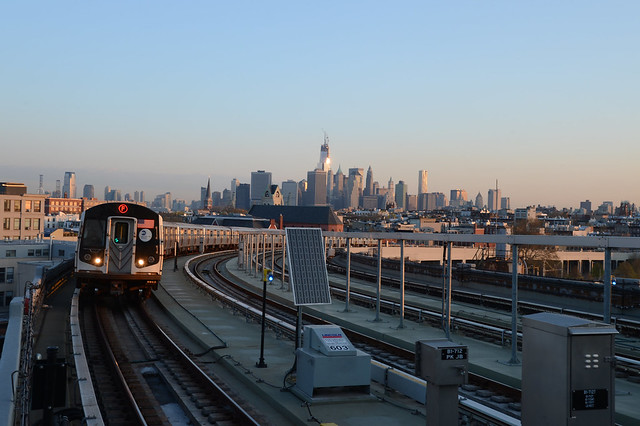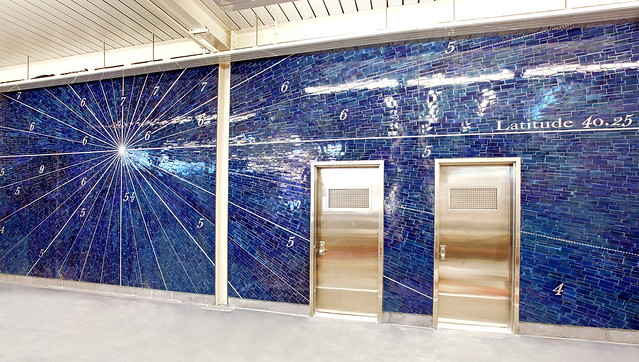
A sign in the 14th St. station announced new cell service last year. (Photo via Second Ave. Sagas on Instagram)
Whenever the MTA’s and Transit Wireless’ ambitious but slow plan to wire underground subway stations hits the news, a wave of articles bemoaning the intrusion of the connected realm into the sacred space of the subways hits the wires. It’s such a Manhattan-centric way of looking at the way New Yorkers use and ride the subways, and yet, when the MTA gathered cell phone big wigs and agency higher-ups last week in Times Square, the coverage that followed focused on this element but with a seemingly more nuanced twist this time.
In The Times, Matt Flegenheimer spoke to a cross section of New Yorkers about subway cell service. Many applauded the initiative, but a few scoffed at it. “If you don’t get reception, that gives you peace of mind,” Leo Bruce of Queens said at 18th St. “I don’t like being bothered sometimes,” one Yonkers woman who responded to a text message anyway said.
Eric Jaffe at The Atlantic Cities tried to find the reasons why cell conversations are so bothersome. We want to hear both sides of the conversation, and the one-sided nature of cell snippets truly seems to grind our gears. He explains,”Researchers found that people who overheard a cell phone conversation unwittingly remembered more words from it, compared to a two-person discussion they also overheard. The results, according to the researchers, suggest that ‘people are more attentive to cell phone conversations than two-sided conversations.'”
We’re more attentive because we want to fill in the gaps. We want to know what that person is talking about, and we can’t eavesdrop in the background if our mind is unwittingly racing to fill in the blanks. It’s not just annoying because it’s added sound in an already-noisy environment; it’s annoying because it’s only part of a conversation within earshot.
But it’s not a new phenomenon in New York City. Just because cell service has arrived in crowded subway stations doesn’t mean the same thing hasn’t been going on for the better part of the last two decades. While a majority of New York City subway stations are indeed underground, a significant minority of stations are above ground or at grade, and those stations have enjoyed cell service since essentially the dawn of the technology in New York. Ride a B train crossing the Manhattan Bridge and straphangers whip out their phones. “I’m crossing the bridge. I’ll be home in 15 minutes,” filters through the car. We laugh; we roll our eyes; we try not to get annoyed.
Now and then, of course, someone with no concept of a public space gets a call, and that’s when the huffing and puffing beings. Loud conversations in small spaces — open-air stations, Times Square — aren’t any fun no matter the location, but it doesn’t take underground service to drive that point home. It takes one long wait at a station in Astoria and the wrong person nearby on the platform.
Ultimately, I find the annoyances of rare improper conversations worth the convenience. After all, subway platforms are a bit of a liminal space within the city. Ideally, we spend no more than 10 minutes on these platforms per day, and yet social norms and social interactions take on a heightened importance. What happens while we wait for the subway seems more important than what happens throughout the rest of the day. But for those fleeting minutes, I’ll take the connectivity and live with the consequences.


 Hating on the G train has become something of a New York pastime over the past few years. Even people who have no reason to ride the IND Crosstown deride it as an unreliable train. “The G sucks” is a common refrain, if only because it’s what we’re supposed to say.
Hating on the G train has become something of a New York pastime over the past few years. Even people who have no reason to ride the IND Crosstown deride it as an unreliable train. “The G sucks” is a common refrain, if only because it’s what we’re supposed to say.
















